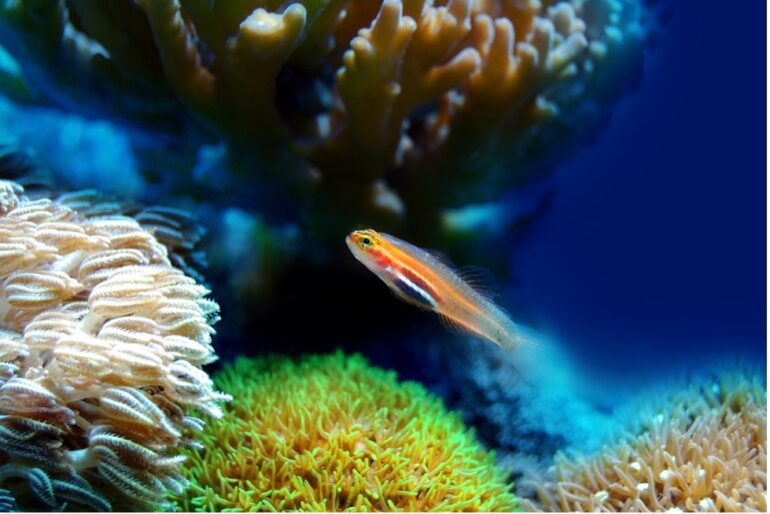Goldfish may often be seen in a circular and small bowl, but they often thrive better when you can give them a huge aquarium. If you’re committed to giving them the best life and environment, the good thing is that setting up these tanks is not as complex as anyone may think at first. See information about goldfish when you click here.
With some basics and helpful tips, you can get started in setting up the bigger tanks. You just have to figure out what kind of water they like and whether they require special treatment. Here are some tips to help you out.
Keep the Water Clean
Cycling is an essential part of this, and this means that you let everything run by an artificial source of ammonia before adding the freshwater fish. Afterward, when you put the filter in, you can discover that the good bacteria have formed in the water, and the fish are going to thrive in a temperature that’s just right for them.
Utilize some test kits that you can purchase online; adding around two to four parts per million of ammonia may help. Leave the filters running and check the levels the next morning—they should be around 0 ppm.
Select the Sizes
You need to buy the right aquarium so that the fish have more than enough space to live together. Goldfish can often live with freshwater types like ricefish. The latter is in the same species and looks like the cloud minnows, and they also come in various colors like orange, platinum and white.
Before you move other fish, you can always get tips from FishyPro, and it is best if you have the proper sizes for all the aquatics, bioload and other stuff that you might decide to put into the aquarium.
Some owners find themselves falling in love with another species and know that the bigger the aquarium is, the better it can maintain the smaller species. Wastes are easily diluted in the water and it’s going to mean less cleaning as well. Others may want to start first with the small tanks and decide where to go from there. Sometimes these owners will realize they need an upgrade sooner rather than later.
Size matters because goldfish and tropical species are very active. They love spaces where they can swim around and they also need a lot of dissolved oxygen inside the tank to grow properly. As with any other living thing, poop build-up can be very harmful, and it can shorten the life of the goldfish.
Decorations To Add
Castles and shells are a must, as well as various plants and gravel. Always select the ones that are appropriate to the species of your choice, and the objects, like the rocks shouldn’t be too small. Tropical and freshwater species tend to be scavengers, and they want to investigate and play, so make sure that they don’t accidentally swallow anything. Seashells may also affect the pH levels of the water, and wood products may cause discoloration, so avoid the inappropriate ones as much as possible.
Introduction to the New Tank

After the aquarium has been set up, it’s time to select the occupants. Always go with the handsome and healthier varieties, and don’t choose the ones that are sick. Go with the ones that are always on the move, nibble on some plans and act as a boss. They should have clear eyes and not be cloudy.
Never hurry the introduction, and if you purchase them in plastic bags, let them float first for around ten to fifteen minutes to let them acclimate to the differences in temperature.
Don’t mix the bagged water into the one that’s already in the aquarium, instead scoop the goldfish if needed. Afterward, let them explore and give them some space and time to get used to their new living quarters.
Feeding them is simple and there are a lot of options. The food should be dry, but you need to soak it in the water for a minute. They should be suspended in the water or they should sink. Food that’s floating can result in bladder issues. Find information about the food here: https://www.sciencedirect.com/topics/agricultural-and-biological-sciences/fish-feeds.
Location of the Aquarium
After the acclimation and preparation, the next question that many owners may have in mind is where they should put the tank. Know that if you place it within the range of sunlight, whether the source is direct or indirect, it can result in instability in temperature and lots of algae problems.
This is why you might want to dedicate a corner wall space with a strong floor and a direct water outlet. While placing a fish tank in direct sunlight may seem aesthetically pleasing, it’s generally not recommended for the long-term health of your aquatic inhabitants. While some fish species may tolerate short bursts of morning or evening sunlight, sustained exposure poses several challenges.
- First, sunlight can cause significant temperature fluctuations throughout the day, stressing fish and potentially leading to health problems.
- Second, intense sunlight promotes excessive algae growth, creating an unsightly and potentially harmful environment.
- Additionally, sunlight can disrupt the natural day-night cycle crucial for fish health and well-being. If you’re set on a sunlit location, opt for indirect sunlight and prioritize a stable temperature using a reliable aquarium heater and thermometer.
Remember, a well-maintained, controlled environment is key to thriving fish and a vibrant aquarium.
Also, it’s best to keep the adults away from the baby goldfish because the former will tend to eat the latter. Even new eggs will get eaten by the adults if there are opportunities inside the tank. They don’t have any parental instincts, and you can only put the two together once they grow bigger.





